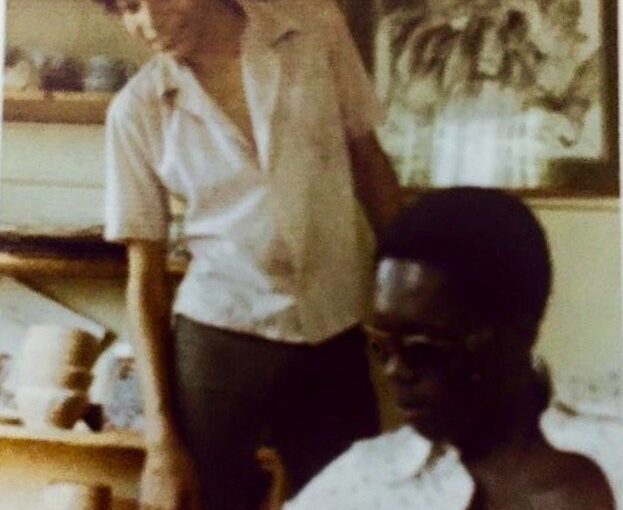“Art is something that has to come from inside of you. It’s a particular feeling, something that is burning deep down inside. [It is of equal importance] to get a mentor, materials, and to know the art history. You also need an art teacher to give you the confidence. Donald Locke was that kind of teacher to me. He taught me everything that I needed to know. He taught me about life and how to live as an artist,” US-based Guyanese visual artist Dudley Charles recalled.
Some might call it a coincidence but interestingly enough Charles’ home in Plaisance on the East Coast of Demerara was relatively close to Donald Locke’s own home and studio. Following his introduction to Locke, the two often took turns visiting each other’s studio to review Charles’ portfolio. While Locke agreed that he was talented, he insisted that talent was not enough. That statement would be the spark that ignited Charles’ passion for the production of his own artworks.
“Donald never liked to see an artist without materials to work. He would always ensure that you had the materials you needed to do the work. And you had to work. I had a great mentorship with Donald. But it seems the same isn’t happening now in Guyana,” he lamented.
Charles recalls being the youngest member of a collective Locke formed during the 60s called Group 67. Other members included Locke’s wife Leila, Philip Moore, Judy Drayton and her husband, who was not an artist but was responsible for framing artworks. They had several exhibitions at the JFK library on Main Street, the British Council Library, and the Chase Bank where Bank of Guyana now stands.
“After independence there was a great burst of artists, a blossom. This feeling was encouraged by someone who not only loved the arts but who was aware of the importance of the arts in the country. Guyana had a Prime Minister who knew the value of art and the artists. But even before him there was Cheddi Jagan. He was the person who started the National History and Arts Council.
In 1972 the first CARIFESTA was organized and staged in Guyana. Since then no other country in the Caribbean has ever matched that first one. Every artist I meet would always talk about the first CARIFESTA and about it being the best. After Burnham passed away Desmond Hoyte didn’t understand the importance of it. But Hamilton Green understood and loved the arts. He has a large collection of Guyanese art,” Charles remarked.
Speaking on Dr. Denis Williams, Charles explained that he first met the local icon for the first time in 1974. He remembers Williams’ work being featured in the prestigious Times magazine at some point. In fact, Williams was even his boss back when Charles worked at the Department of Culture.
A few other moments stand out in his memory including the 1988 exhibition at the Umana Yana featuring works by Frank Bowling and Dennis de Caires, and the one time he met E.R. Burrowes when he was teaching art at Christ Church Secondary School.


